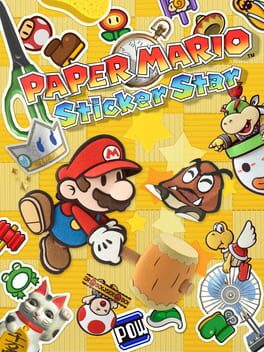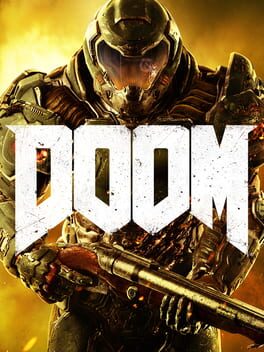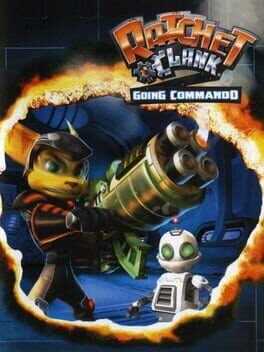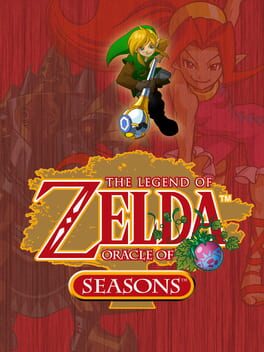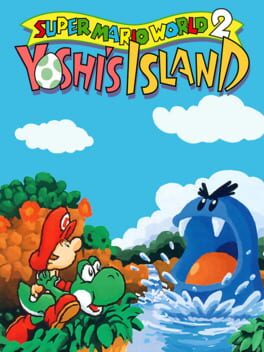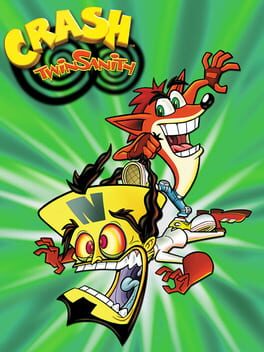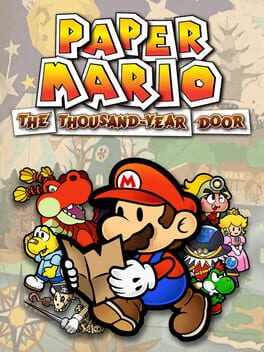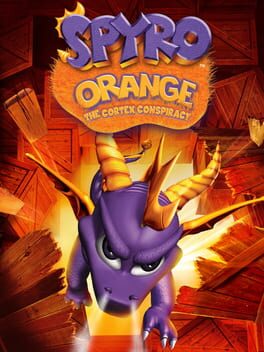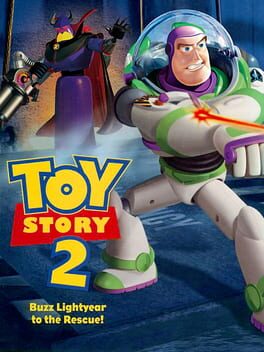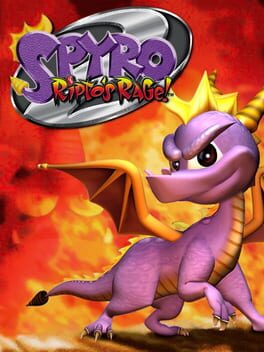RandomContent
2016
If you can do one thing really well, why shouldn't you?
Doom is a true return to form for classic shooting games. Throughout the years, many tedious additions have been made to first-person shooters. Reloading, stamina gauges, and fall damage are considerations which added a layer of realism to shooting games that is often made at the expense of fast pacing and
distinct gameplay. Doom 2016 throws all that out and takes the genre back to its roots, providing a visceral, bombastic gameplay loop of nightmarish enemies, ridiculous(in a good way) weapons, and hellish landscapes all delivered at a breakneck pace. The shooting mechanics of this game were indeed polished to a bright shine, but one that could be overbearing after a while.
Shooting is essentially all you'll be doing in this game. This basic gameplay structure was acceptable for 1993, but Doom 2016 lacked in alternate gameplay styles, meaningful story development, compelling characters, and varied locations when it had the resources to expand more on the classic game's structure. I found Doom 2016's gameplay so repetitive I could only play the game in short bursts.
Structurally, Doom 2016 is an incredible game by the standards set in the nineties, but only a good game today. I'll recommend this game to any fan of first-person shooting in a heartbeat, but for a game to truly be considered a masterpiece by today's standards, I expect a good deal more.
Doom is a true return to form for classic shooting games. Throughout the years, many tedious additions have been made to first-person shooters. Reloading, stamina gauges, and fall damage are considerations which added a layer of realism to shooting games that is often made at the expense of fast pacing and
distinct gameplay. Doom 2016 throws all that out and takes the genre back to its roots, providing a visceral, bombastic gameplay loop of nightmarish enemies, ridiculous(in a good way) weapons, and hellish landscapes all delivered at a breakneck pace. The shooting mechanics of this game were indeed polished to a bright shine, but one that could be overbearing after a while.
Shooting is essentially all you'll be doing in this game. This basic gameplay structure was acceptable for 1993, but Doom 2016 lacked in alternate gameplay styles, meaningful story development, compelling characters, and varied locations when it had the resources to expand more on the classic game's structure. I found Doom 2016's gameplay so repetitive I could only play the game in short bursts.
Structurally, Doom 2016 is an incredible game by the standards set in the nineties, but only a good game today. I'll recommend this game to any fan of first-person shooting in a heartbeat, but for a game to truly be considered a masterpiece by today's standards, I expect a good deal more.
Still the best.
As a guy who thinks the first R&C doesn't hold up very well, I think this one holds up spectacularly. Going Commando fixed every single problem I had with the first game and installed so many of the franchise hallmarks that are still present in the series today. I'll give the first game credit for creating the formula. But, if you ask me, this game deserves credit for perfecting it and putting these games on the map.
The controls are much better: I can finally strafe! The banal weapon selection from the first game was overhauled into an amazing selection of creative weapons that became more addicting to use due to the weapon upgrade system which would be featured in every game in the series henceforth. There is great gameplay variety as well: I can play the racing, arena, and crystal collection sections for hours(and I do): It is very impressive how this game adds so much variety without shattering the core gameplay loop in an obtrusive way. The fact that they are optional is objectively good, but I'd play them all anyway. After all, with 100% completion as excellent as this it is no trouble to get every clever skill point or devilishly-hidden platinum bolt leading up to the excellent hidden museum reward.
To be fair, the writing hasn't much improved unless you count all of it. Going Commando has a really fun, unique story that doesn't remind me of any other video game narrative, and it is the only game in the series not to use the exact same structure of, 'lengthy, contrived series of events to hunt down an obvious bad guy in an inefficient way.' The game is filled with quirky humor and memorable characters. The charm in this game is palpable, Ratchet is no-longer the worst main character ever, and the game features Ratchet's first, and easily best, love interest. Seriously, I never got over the series writing her out after this installment. I'm not too hopeful, but I'd love to see her again.
My problems with the game are very minor: I really like most of the optional content, but I wasn't crazy about the dogfights or the giant Clank sections; Most boss fights are very easy and basic; And the fact that the development became rushed near the end does show. The final few levels are weaker and the conclusion is rushed. But, honestly, who cares? This game is amazing.
In fact, much of this adulation may sound familiar to another Insomniac Game I bent over backwards to praise. The wonderful side-characters, the excellent 100% completion, the fantastic level design with the captivating worlds and quirky charm? To me, this game is the closest Insomniac has ever gotten to recapturing the original Spyro 2. I see so much of that game in this one. And, while I don't like Going Commando quite as much, it is another game I wouldn't have wanted to grow up without.
I don't know if this series will ever reach these same heights again. But, as long as I have this game to come back to, that's fine with me.
But seriously. Bring Angela back! #SaveAngela
As a guy who thinks the first R&C doesn't hold up very well, I think this one holds up spectacularly. Going Commando fixed every single problem I had with the first game and installed so many of the franchise hallmarks that are still present in the series today. I'll give the first game credit for creating the formula. But, if you ask me, this game deserves credit for perfecting it and putting these games on the map.
The controls are much better: I can finally strafe! The banal weapon selection from the first game was overhauled into an amazing selection of creative weapons that became more addicting to use due to the weapon upgrade system which would be featured in every game in the series henceforth. There is great gameplay variety as well: I can play the racing, arena, and crystal collection sections for hours(and I do): It is very impressive how this game adds so much variety without shattering the core gameplay loop in an obtrusive way. The fact that they are optional is objectively good, but I'd play them all anyway. After all, with 100% completion as excellent as this it is no trouble to get every clever skill point or devilishly-hidden platinum bolt leading up to the excellent hidden museum reward.
To be fair, the writing hasn't much improved unless you count all of it. Going Commando has a really fun, unique story that doesn't remind me of any other video game narrative, and it is the only game in the series not to use the exact same structure of, 'lengthy, contrived series of events to hunt down an obvious bad guy in an inefficient way.' The game is filled with quirky humor and memorable characters. The charm in this game is palpable, Ratchet is no-longer the worst main character ever, and the game features Ratchet's first, and easily best, love interest. Seriously, I never got over the series writing her out after this installment. I'm not too hopeful, but I'd love to see her again.
My problems with the game are very minor: I really like most of the optional content, but I wasn't crazy about the dogfights or the giant Clank sections; Most boss fights are very easy and basic; And the fact that the development became rushed near the end does show. The final few levels are weaker and the conclusion is rushed. But, honestly, who cares? This game is amazing.
In fact, much of this adulation may sound familiar to another Insomniac Game I bent over backwards to praise. The wonderful side-characters, the excellent 100% completion, the fantastic level design with the captivating worlds and quirky charm? To me, this game is the closest Insomniac has ever gotten to recapturing the original Spyro 2. I see so much of that game in this one. And, while I don't like Going Commando quite as much, it is another game I wouldn't have wanted to grow up without.
I don't know if this series will ever reach these same heights again. But, as long as I have this game to come back to, that's fine with me.
But seriously. Bring Angela back! #SaveAngela
These are some of the most forgettable bosses, bland weapons, and flat characters; with one of the weakest stories; some of the most tedious exploration; and some of the least satisfying progression I've ever experienced in a Zelda game.
The Legend of Zelda had produced some of my all-time favorite games, so to have Oracle of Seasons do so little for me is a shame. I'll admit I'm generally not as big a fan of handheld entries in this series, but this game runs on the same engine as Link's Awakening: a certified banger, so I know greatness was possible.
The Legend of Zelda had produced some of my all-time favorite games, so to have Oracle of Seasons do so little for me is a shame. I'll admit I'm generally not as big a fan of handheld entries in this series, but this game runs on the same engine as Link's Awakening: a certified banger, so I know greatness was possible.
2007
Please don't take me ranking the second game over God of War PS4 as a knock against that game, instead take it as an indication of what an accomplishment this game is.
GoW 2 blew the first game out of the water in every possible way, and the first game was good! Still, I found 2's epic story, powerful music, sense of scale, and investment with the mythology to be magnificent enough to cement it as the ultimate God of War game fifteen years later!
Gone are the droves of repetitive enemies and static levels which help the previous game back. God of War two is constantly peppering in new enemies, levels hazards, unique set pieces, new weapons/spells, and mythological references which ensure there is something new around every corner. The fact that this game manages to have so much variety and progression without feeling rushed is amazing.
I could nitpick some dated graphics, a few characters who could have used more development, and an ending which I have mixed feelings about, but whatever problems this game has are washed away by a tidal wave of gaming excellence. The only real problem is that Kratos' character in this game feels like a regression from his counterpart in the first game. If he was more compelling and his personal journey more meaningful, we'd be looking at a ten out of ten game here.
Given what a huge improvement this game was over its original, I am all the more excited for Ragnarök.
GoW 2 blew the first game out of the water in every possible way, and the first game was good! Still, I found 2's epic story, powerful music, sense of scale, and investment with the mythology to be magnificent enough to cement it as the ultimate God of War game fifteen years later!
Gone are the droves of repetitive enemies and static levels which help the previous game back. God of War two is constantly peppering in new enemies, levels hazards, unique set pieces, new weapons/spells, and mythological references which ensure there is something new around every corner. The fact that this game manages to have so much variety and progression without feeling rushed is amazing.
I could nitpick some dated graphics, a few characters who could have used more development, and an ending which I have mixed feelings about, but whatever problems this game has are washed away by a tidal wave of gaming excellence. The only real problem is that Kratos' character in this game feels like a regression from his counterpart in the first game. If he was more compelling and his personal journey more meaningful, we'd be looking at a ten out of ten game here.
Given what a huge improvement this game was over its original, I am all the more excited for Ragnarök.
When elegant simplicity meets mind-numbing repetition.
If you've played the first level of this game, you've essentially played the whole thing. Yoshi's Island's beautiful artwork, strong soundtrack, and solid gameplay loop weren't enough to stop me from being overwhelmed by a feeling of repetition so strong I could only play about three levels at a time. Worth mentioning is that the game's stressful 100% completion, tacked-on minigames, and (mostly) weak boss roster didn't help.
Play this game in short bursts, and you'll have a good time.
If you've played the first level of this game, you've essentially played the whole thing. Yoshi's Island's beautiful artwork, strong soundtrack, and solid gameplay loop weren't enough to stop me from being overwhelmed by a feeling of repetition so strong I could only play about three levels at a time. Worth mentioning is that the game's stressful 100% completion, tacked-on minigames, and (mostly) weak boss roster didn't help.
Play this game in short bursts, and you'll have a good time.
2004
A unique, enduring classic which deserves every bit of the love it gets.
In Thousand-Year Door, you don the red, 2-dimensional hat of Mario as you explore some of the most distinct, unconventional and fleshed-out worlds ever brought to life in a Nintendo game. While it is true that other Mario games may have this one beat in terms of inventive gameplay mechanics, this one succeeds at creating worlds that feel inhabited, characters with meaningful issues and stories and an overarching narrative that is gripping and memorable both chapter by chapter and when looked at on a grander scale.
Take any of Mario's new, and frankly, wonderful companions into varied and rewarding battles. Although simplistic, the combat in this game is fun, addictive and endlessly customizable with the different upgrade options. The main quest offers plenty of challenge, but the game also hides away a few crushing hurtles to overcome for those wishing to push themselves further. Whether you wish to play the game casually, or to 100%, there is something here for every gamer.
Sadly, the trip to 100% does bring attention to some of the games issues. The side quests found at Rougeport's Trouble Center are amazingly tedious and repetitive; I'd have to recommend skipping as many of them as possible. Completion of the recipe log is very daunting as well, even with a guide in hand, and I can't recommend that either. Lastly, I was disappointed with the rushed epilogue and overall lack of postgame. The game created such wonderful characters, but I feel the conclusions to many of their stories weren't as satisfying as they could have been.
Even if the game didn't end on its strongest note, I would still highly recommend Thousand-Year Door to nearly anyone. The versatile gameplay, character-driven story and charming world with even more charming inhabitants award Thousand-Year Door the distinction of 'Favorite Paper Mario Game' to many long-time fans, myself included.
In Thousand-Year Door, you don the red, 2-dimensional hat of Mario as you explore some of the most distinct, unconventional and fleshed-out worlds ever brought to life in a Nintendo game. While it is true that other Mario games may have this one beat in terms of inventive gameplay mechanics, this one succeeds at creating worlds that feel inhabited, characters with meaningful issues and stories and an overarching narrative that is gripping and memorable both chapter by chapter and when looked at on a grander scale.
Take any of Mario's new, and frankly, wonderful companions into varied and rewarding battles. Although simplistic, the combat in this game is fun, addictive and endlessly customizable with the different upgrade options. The main quest offers plenty of challenge, but the game also hides away a few crushing hurtles to overcome for those wishing to push themselves further. Whether you wish to play the game casually, or to 100%, there is something here for every gamer.
Sadly, the trip to 100% does bring attention to some of the games issues. The side quests found at Rougeport's Trouble Center are amazingly tedious and repetitive; I'd have to recommend skipping as many of them as possible. Completion of the recipe log is very daunting as well, even with a guide in hand, and I can't recommend that either. Lastly, I was disappointed with the rushed epilogue and overall lack of postgame. The game created such wonderful characters, but I feel the conclusions to many of their stories weren't as satisfying as they could have been.
Even if the game didn't end on its strongest note, I would still highly recommend Thousand-Year Door to nearly anyone. The versatile gameplay, character-driven story and charming world with even more charming inhabitants award Thousand-Year Door the distinction of 'Favorite Paper Mario Game' to many long-time fans, myself included.
The fact that I have to give a 1/10 to a Spyro game makes me profoundly sad.
The true tragedy of Spyro Orange is that a crossover between Crash and Spyro could have been amazing. It's a fantastic idea the game took no advantage of and instead opted to turn the game into a sequence of lame, generic minigames. The gameplay of Spyro Orange is so dreadful that the mere process of walking from left to right in the hub world is remarkably tedious. I hope beyond hope that the purple dragon and the orange marsupial try the crossover thing again. A fabulous crossover between these two could tear away this game's last shred of relevance. Judging by the other scores I've seen for this game, I'm guessing you'd all be fine with that.
The true tragedy of Spyro Orange is that a crossover between Crash and Spyro could have been amazing. It's a fantastic idea the game took no advantage of and instead opted to turn the game into a sequence of lame, generic minigames. The gameplay of Spyro Orange is so dreadful that the mere process of walking from left to right in the hub world is remarkably tedious. I hope beyond hope that the purple dragon and the orange marsupial try the crossover thing again. A fabulous crossover between these two could tear away this game's last shred of relevance. Judging by the other scores I've seen for this game, I'm guessing you'd all be fine with that.
1995
The level design in this game is fantastic, everything else in the game isn't.
The Level Design:
Gex 3 seriously has some of the best levels of any 3D platformer I've ever played. No two main levels have the same theme, even the hub worlds and some of the side levels are unique. Every main level feels big and sprawling, big enough to be impressive and give a sense of accomplishment for making it to the end, but linear enough so that the player doesn't get lost. Each level is loaded with background gags, unique enemies, and objectives that are well-separated enough to cut back on backtracking when going for different remotes(most of the time). Gex's unique costumes and quips for each level are a nice touch too. I can run through most of the levels in this game a thousand times and never get tired of them.
The Everything Else:
This game's story was likely the inspiration for Sonic 06. I find it hilarious that this random woman who never appeared in the previous games is suddenly the driving force behind the plot, and not hilarious in the way the game intended. The soundtrack is pretty good and Gex's quips are occasionally funny, but if you feel the need to throw your TV out a window by the end of the story after hearing Gex's 15th flirty conversation with a human playboy model, I won't blame you. The actual gameplay can be pretty stale and repetitive, and the 100 fly coin objective in each level would probably ruin the game for me were the levels not so good. The boss fights are joke(Rez excluded) and most of the collectables are worthless, only feeding into a lame 100% completion reward that is not worth your time. The main villain never has a speaking line in the whole game, making Gex 3's connection to the previous 2 games feel tenuous; this game has the Sly Cooper 3 problem. This game is unpolished and lackluster in many ways.
Altogether, I loved this game for the level design alone. If great levels themselves are enough to spark your interest, Gex 3 will scratch that itch. If that isn't enough for you, then I'm sad to say this is a game to skip.
The Level Design:
Gex 3 seriously has some of the best levels of any 3D platformer I've ever played. No two main levels have the same theme, even the hub worlds and some of the side levels are unique. Every main level feels big and sprawling, big enough to be impressive and give a sense of accomplishment for making it to the end, but linear enough so that the player doesn't get lost. Each level is loaded with background gags, unique enemies, and objectives that are well-separated enough to cut back on backtracking when going for different remotes(most of the time). Gex's unique costumes and quips for each level are a nice touch too. I can run through most of the levels in this game a thousand times and never get tired of them.
The Everything Else:
This game's story was likely the inspiration for Sonic 06. I find it hilarious that this random woman who never appeared in the previous games is suddenly the driving force behind the plot, and not hilarious in the way the game intended. The soundtrack is pretty good and Gex's quips are occasionally funny, but if you feel the need to throw your TV out a window by the end of the story after hearing Gex's 15th flirty conversation with a human playboy model, I won't blame you. The actual gameplay can be pretty stale and repetitive, and the 100 fly coin objective in each level would probably ruin the game for me were the levels not so good. The boss fights are joke(Rez excluded) and most of the collectables are worthless, only feeding into a lame 100% completion reward that is not worth your time. The main villain never has a speaking line in the whole game, making Gex 3's connection to the previous 2 games feel tenuous; this game has the Sly Cooper 3 problem. This game is unpolished and lackluster in many ways.
Altogether, I loved this game for the level design alone. If great levels themselves are enough to spark your interest, Gex 3 will scratch that itch. If that isn't enough for you, then I'm sad to say this is a game to skip.
I'll be blunt: I've played the Uncharted games pretty extensively, and I don't think this is the best one.
That isn't to say the game is bad by any means. By the minute you boot up the game, the improvement from the first game is palpable. Better graphics, better writing, more varied gameplay with a much more interesting story and fleshed-out characters. Uncharted 2 is a sequel done right.
I found the first half of the game to be fantastic: the story moved at a brisk pace with varied levels and strong set pieces to mix up the basic gameplay. The first half culminated in the iconic train sequence which was easily the best part of the game, and one of the best sections of any Uncharted game to this day. After a section as amazing as that, you'd probably think it's all downhill from there. Unfortunately, you'd be right.
The variety in levels from the first half of the game is gone going into the second half, I was so sick of snowy mountain levels by the end of the game I wanted to scream. The gameplay also felt noticeably weaker, devolving into repetitive shootout and repetitive climbing section on loop for what felt like hours, and I spent most of it longing to repay Uncharted 3. Throw in a disappointing final boss, and I have to say I barely enjoyed the latter half of the game, but that isn't even my biggest problem: that would be the characters.
They say strong characters can carry a weak story; it doesn't work the other way around. For that reason(and many others), I'll always prefer Uncharted 3 to 2. I may have said the characters were better than in Uncharted 1, but I didn't say they were good. The only two in this game who didn't annoy me were Tenzin and Sully. They were great; they were also barely in the game. Excuse me while I roast the rest of them:
I found Nate to still be a pretty cocky moron in this game: I hardly felt he had grown up since the first game, and I rarely enjoyed the scenes focused on him. I sorta hated Chloe to be honest: Her elegances changed so drastically it was legitimately pretty confusing, she came off as very selfish and short-sighted, and she became completely redundant the minute Elena came back, and the game seemed to know that and wrote her out of most of the rest of it. Elena was fine, but both of her out-of-nowhere appearances in the story were extremely jarring, and I didn't feel like she added much to the story. Karl Schafer is literally only necessary to the story because Tenzin can't speak English, and the game expects us to feel emotional at his death after knowing him for two minutes, just like it did with Jeff, I feel manipulated. Lazarevic is one of the goofiest placeholders for a character I've ever seen, he has very little stage presence, and his boss fight is one of the few parts of this game even diehard fans don't like. I'm amazed the game expects me to take him seriously.
And finally... let's talk about Flynn. Many in the Uncharted community regard Harry Flynn as the best villain in the franchise, and I couldn't disagree more. His motivations make no sense, why is he working for a guy who is obviously going to betray him and kill him? He doesn't even seem surprised when it happens. What was his endgame anyway? Money? That's boring. He needed a more personal motivation, like Rafe, if he was going to be interesting. The scenes with him are annoying, his dialogue isn't great, his death scene is really unsatisfying(yes, I understand that's the point, but it's a lousy point), and I have no idea where his distain for Nate came from. However, my biggest problem is how damn incompetent he is. Nate escapes when Harry has him at gunpoint five times by my count. Lazarevic was right; he hired the wrong guy.
I know I didn't say too many positive things about Among Thieves, but there are a million reviews you can read heralding this game as one of the all-time greats. I'm glad that's what you all think, but I can't relate, I'm mostly just bummed by how underappreciated Uncharted 3 is. I should really re-review that game, I didn't say half the good things I had to say.
That isn't to say the game is bad by any means. By the minute you boot up the game, the improvement from the first game is palpable. Better graphics, better writing, more varied gameplay with a much more interesting story and fleshed-out characters. Uncharted 2 is a sequel done right.
I found the first half of the game to be fantastic: the story moved at a brisk pace with varied levels and strong set pieces to mix up the basic gameplay. The first half culminated in the iconic train sequence which was easily the best part of the game, and one of the best sections of any Uncharted game to this day. After a section as amazing as that, you'd probably think it's all downhill from there. Unfortunately, you'd be right.
The variety in levels from the first half of the game is gone going into the second half, I was so sick of snowy mountain levels by the end of the game I wanted to scream. The gameplay also felt noticeably weaker, devolving into repetitive shootout and repetitive climbing section on loop for what felt like hours, and I spent most of it longing to repay Uncharted 3. Throw in a disappointing final boss, and I have to say I barely enjoyed the latter half of the game, but that isn't even my biggest problem: that would be the characters.
They say strong characters can carry a weak story; it doesn't work the other way around. For that reason(and many others), I'll always prefer Uncharted 3 to 2. I may have said the characters were better than in Uncharted 1, but I didn't say they were good. The only two in this game who didn't annoy me were Tenzin and Sully. They were great; they were also barely in the game. Excuse me while I roast the rest of them:
I found Nate to still be a pretty cocky moron in this game: I hardly felt he had grown up since the first game, and I rarely enjoyed the scenes focused on him. I sorta hated Chloe to be honest: Her elegances changed so drastically it was legitimately pretty confusing, she came off as very selfish and short-sighted, and she became completely redundant the minute Elena came back, and the game seemed to know that and wrote her out of most of the rest of it. Elena was fine, but both of her out-of-nowhere appearances in the story were extremely jarring, and I didn't feel like she added much to the story. Karl Schafer is literally only necessary to the story because Tenzin can't speak English, and the game expects us to feel emotional at his death after knowing him for two minutes, just like it did with Jeff, I feel manipulated. Lazarevic is one of the goofiest placeholders for a character I've ever seen, he has very little stage presence, and his boss fight is one of the few parts of this game even diehard fans don't like. I'm amazed the game expects me to take him seriously.
And finally... let's talk about Flynn. Many in the Uncharted community regard Harry Flynn as the best villain in the franchise, and I couldn't disagree more. His motivations make no sense, why is he working for a guy who is obviously going to betray him and kill him? He doesn't even seem surprised when it happens. What was his endgame anyway? Money? That's boring. He needed a more personal motivation, like Rafe, if he was going to be interesting. The scenes with him are annoying, his dialogue isn't great, his death scene is really unsatisfying(yes, I understand that's the point, but it's a lousy point), and I have no idea where his distain for Nate came from. However, my biggest problem is how damn incompetent he is. Nate escapes when Harry has him at gunpoint five times by my count. Lazarevic was right; he hired the wrong guy.
I know I didn't say too many positive things about Among Thieves, but there are a million reviews you can read heralding this game as one of the all-time greats. I'm glad that's what you all think, but I can't relate, I'm mostly just bummed by how underappreciated Uncharted 3 is. I should really re-review that game, I didn't say half the good things I had to say.
There was no giant trashcan slime monster in the movie-
But there should have been.
As most of us remember this game is a banger. The big, imaginative levels are fun to explore, the soundtrack is great, the gameplay is really fun and varied, and all of the new enemies and locations fit the Toy Story aesthetic perfectly.
Unfortunately, the game also has a decent amount of backtracking, lame boss fights, and is over a bit too soon, so I can't say it's amazing, but it is well worth your time more than twenty years later.
But there should have been.
As most of us remember this game is a banger. The big, imaginative levels are fun to explore, the soundtrack is great, the gameplay is really fun and varied, and all of the new enemies and locations fit the Toy Story aesthetic perfectly.
Unfortunately, the game also has a decent amount of backtracking, lame boss fights, and is over a bit too soon, so I can't say it's amazing, but it is well worth your time more than twenty years later.
2021
I can't believe how well Samus controls in this game.
There is such a satisfying flow and speed to Samus's movements as you're tearing through gorgeous levels and stringing together attacks from Dread's useful, varied move pool. Gone is the charcuterie board of useless alternate weapons which bogged down other games in the franchise, every single weapon and ability in this game is intuitive, useful in its own right, and satisfying to use(except one, but I'll discuss it in a second)
The strong level design, enemy variety, and sense of progression kept the experience consistently rewarding throughout my 10-hour playthrough, and I'll happily be going back for hard mode some day soon. This may actually be the only Metroid game I've ever played where the huge supply of missiles proved useful. The tense E.M.M.I. encounters and phenomenal, cinematic boss fights will stick with me for a long time.
Sadly, there were a few issues that took away from the experience at points. Ironically, Dread has a noticeably thinner atmosphere than previous Metroid games; I very rarely felt immersed in the world or frightened by the monsters. The story is also rather clumsily-told, opting to use long, dialogue-heavy cutscenes which clash heavily with the game's otherwise brisk pace and environmental storytelling. Oh, and the speed booster sucks balls. It is so clunky and frustrating to use I cannot believe the same people who programmed it programed the rest of Samus's move set, and the places where you need to use it are consistently the worst parts of the game.
As long as I'm not speed boosting or watching an expository cutscene, this game is awesome. It doesn't matter if you're a diehard Metroid fan, haven't played one in a while, or a newcomer: I'll recommend Metroid Dread all the same.
There is such a satisfying flow and speed to Samus's movements as you're tearing through gorgeous levels and stringing together attacks from Dread's useful, varied move pool. Gone is the charcuterie board of useless alternate weapons which bogged down other games in the franchise, every single weapon and ability in this game is intuitive, useful in its own right, and satisfying to use(except one, but I'll discuss it in a second)
The strong level design, enemy variety, and sense of progression kept the experience consistently rewarding throughout my 10-hour playthrough, and I'll happily be going back for hard mode some day soon. This may actually be the only Metroid game I've ever played where the huge supply of missiles proved useful. The tense E.M.M.I. encounters and phenomenal, cinematic boss fights will stick with me for a long time.
Sadly, there were a few issues that took away from the experience at points. Ironically, Dread has a noticeably thinner atmosphere than previous Metroid games; I very rarely felt immersed in the world or frightened by the monsters. The story is also rather clumsily-told, opting to use long, dialogue-heavy cutscenes which clash heavily with the game's otherwise brisk pace and environmental storytelling. Oh, and the speed booster sucks balls. It is so clunky and frustrating to use I cannot believe the same people who programmed it programed the rest of Samus's move set, and the places where you need to use it are consistently the worst parts of the game.
As long as I'm not speed boosting or watching an expository cutscene, this game is awesome. It doesn't matter if you're a diehard Metroid fan, haven't played one in a while, or a newcomer: I'll recommend Metroid Dread all the same.
Ok, I need to make sure I get this right; this game is really important to me. Even if no one reads this, it’s important that I get all these thoughts out, even if just for myself. Alright, let’s get started.
No game left an impact on me the way the original Spyro 2 did. I have vivid memories of being in kindergarten and feigning a stomach virus so I could stay home and play the game, howling in exaggerated pain every time my mother walked by. Nothing could ever measure up to the magic of playing Ripto’s Rage for the first time, and this game is one of my all-time favorites even after twenty years. I am going to discuss my love of this game in five main categories, the things that really make Spyro 2 stand out from other 3D platformers. These categories are: gameplay, worldbuilding, characters, charm/aesthetics, and completion.
Gameplay: Spyro the Dragon was a competent game; it controlled well, the camera was good, and Spyro had a unique feel compared to other game mascots. However, while the gameplay was good, it could be rather basic. The sequel managed to overhaul Spyro’s move set so that it felt like a perfect evolution of the first game, being much richer and more varied. The addition of new power-ups opened so many new possibilities for new combat and side-objectives. Little touches like the hover and ability to climb added so mobility and opened the areas up much more for exploration, but the aspect of Spyro 2 which the game doesn’t get nearly enough credit for is the swimming controls. Underwater exploration in this game has the exact same speed and feel as on-land progression, and the transition is seamless. Underwater traversal in just about any 3D platformer from this era almost always ends up being the worst part of the game, but here it’s a complete nonissue. It’s simply incredible how much depth and variety Spyro 2 adds to the first game’s gameplay without feeling gimmicky or unfaithful. It is also impressive how it manages to keep the gameplay consistent; adding so many new objectives without deviating from the core gameplay loop in any way that would feel jarring (take notes Spyro 3).
Worldbuilding: One thing you’ll hear me say a lot about all three Spyro games is that they’re all really good, and one thing they have in common is great level design. Every Spyro has big, sprawling levels which are equal parts creative and immersive. However, while I love them to pieces, the levels of Spyro 1 and 3 feel like levels in a video game, but the levels of Spyro 2 feel like living, breathing worlds.
The intro and outro cutscenes for each level add so much personality to each world. Not only does every level in the game have unique enemies and conflicts, but we also learn about much of it through gameplay. Whether you are flaming sentient tikis in Idol Springs, blasting stone apart with bagpipe music in Fracture Hills, or turning on a Fountain to stop giant elephant-snails in Mystic Marsh, each area is wildly creative and distinct from any other level I’ve seen in any other platforming game. Other details like characters in one world mentioning another, Zephyr being at war with Breeze Harbor, or worlds with adjacent portals having similar character models all go a long way to making the world feel cohesive and alive. Almost every side-objective in the game teaches you something new about the world you’re in, and the objectives manage to be so creative and memorable, rarely boiling down to ‘just go here and beat up a bunch of enemies’ (are you taking notes Spyro 3?)
Characters: The repetitive Dragon rescues from Spyro 1 were easily the most grating aspect of that game. They lacked in design variety, weren’t well voice-acted, and didn’t add much of a sense of accomplishment to find. Yes, the Reignited version fixed this problem, but that’s a discussion for another time. Ripto’s Rage improved this by having a much smaller cast of characters with much more personality.
Spyro himself has a much better voice actor this time around, but he hasn’t lost any of his spunk from the first game. Elora is a wonderful support who manages to have a lot of personality despite the limited facial animation, Hunter is an endearing companion with a lot of charm, the Professor and Zoe are alright, Moneybags is a funny punching bag, and Ripto is one of my favorite video game villains of all time; the way he can have so much presence and charisma despite his small stature is very impressive. His boss fight is one of my favorites as well.
Even the side-characters manage to be very distinct and memorable. Few of them fall into typical cartoon archetypes. The Juliet character in the game’s Romeo and Juliet spoof has a hilariously non-feminine voice, the fauns in Fracture Hills talk like valley girls because they live in a valley, and the game has a dancing skeleton. Unfortunately, many of these nuances were lost in the transition to Reignited. Many of the characters in the remake have typical voices and personalities, and it makes some levels less memorable. I still think the Reignited version of Spyro 2 is great; I love the revamped soundtrack and a lot of the new character designs and visual details, but a few questionable changes like removing the epilogue and some worse voice acting make me hesitant to call it the definitive way to play the game(they also needed to change Hunter’s age. Seeing him date Bianca is going to be uncomfortable knowing that he’s 42).
Charm/Aesthetics: As a grown adult, I can still listen to Spyro 2’s soundtrack while doing my job, it’s just so damn good. As stated previously, the game is filled with charming characters, unique levels, and beautiful music. There is no other game, even any other Spyro game, that looks like Spyro 2. The aesthetics and music of Spyro 1 and 3 are wonderful as well: this is the only category out of the five where they may actually be as good or better in my opinion, and this was definitely the category I had the least to say about, because the wonderful presentation of these games speaks for itself.
Completion: I was discovering new details and gameplay factors in Spyro 2 up until the remake came out: I spent twenty years coming back to this game, and I was always glad I did. The cutscene theater was a neat reward for the PS1 era, but the permanent super-flame may be the best 100% reward I’ve ever seen in a game. Having the option to neuter the game’s challenge as a reward for finishing the game the first time is ingenious and learning years later that I can start a new playthrough with it was incredibly satisfying. Years apart: I learned about the new game file with the super-flame, the deviously hidden skill point challenges, the cheat codes, the adorable epilogue you get for getting all the skill points, and there is a game-breaking double-jump which lets you skip massive parts of certain levels.
… this game man
I honestly could have kept going. This game was such a crucial, irreplaceable part of my childhood. I love the other Spyro games, and I love the remakes, but the original Ripto’s Rage will always be the best in my eyes. I’m so happy to finally be able to pay my respects to a fantastic game which made me happy and brought me back time and time again. The Purple Dragon has had some less-than-stellar games since the original trilogy, and the future of Spyro 4 is still uncertain. But personally, I’m not worried at all, because I know that no matter what happens, the original Ripto’s Rage will be there for me if I ever need it.
Thanks, Spyro
and thanks Insomniac
No game left an impact on me the way the original Spyro 2 did. I have vivid memories of being in kindergarten and feigning a stomach virus so I could stay home and play the game, howling in exaggerated pain every time my mother walked by. Nothing could ever measure up to the magic of playing Ripto’s Rage for the first time, and this game is one of my all-time favorites even after twenty years. I am going to discuss my love of this game in five main categories, the things that really make Spyro 2 stand out from other 3D platformers. These categories are: gameplay, worldbuilding, characters, charm/aesthetics, and completion.
Gameplay: Spyro the Dragon was a competent game; it controlled well, the camera was good, and Spyro had a unique feel compared to other game mascots. However, while the gameplay was good, it could be rather basic. The sequel managed to overhaul Spyro’s move set so that it felt like a perfect evolution of the first game, being much richer and more varied. The addition of new power-ups opened so many new possibilities for new combat and side-objectives. Little touches like the hover and ability to climb added so mobility and opened the areas up much more for exploration, but the aspect of Spyro 2 which the game doesn’t get nearly enough credit for is the swimming controls. Underwater exploration in this game has the exact same speed and feel as on-land progression, and the transition is seamless. Underwater traversal in just about any 3D platformer from this era almost always ends up being the worst part of the game, but here it’s a complete nonissue. It’s simply incredible how much depth and variety Spyro 2 adds to the first game’s gameplay without feeling gimmicky or unfaithful. It is also impressive how it manages to keep the gameplay consistent; adding so many new objectives without deviating from the core gameplay loop in any way that would feel jarring (take notes Spyro 3).
Worldbuilding: One thing you’ll hear me say a lot about all three Spyro games is that they’re all really good, and one thing they have in common is great level design. Every Spyro has big, sprawling levels which are equal parts creative and immersive. However, while I love them to pieces, the levels of Spyro 1 and 3 feel like levels in a video game, but the levels of Spyro 2 feel like living, breathing worlds.
The intro and outro cutscenes for each level add so much personality to each world. Not only does every level in the game have unique enemies and conflicts, but we also learn about much of it through gameplay. Whether you are flaming sentient tikis in Idol Springs, blasting stone apart with bagpipe music in Fracture Hills, or turning on a Fountain to stop giant elephant-snails in Mystic Marsh, each area is wildly creative and distinct from any other level I’ve seen in any other platforming game. Other details like characters in one world mentioning another, Zephyr being at war with Breeze Harbor, or worlds with adjacent portals having similar character models all go a long way to making the world feel cohesive and alive. Almost every side-objective in the game teaches you something new about the world you’re in, and the objectives manage to be so creative and memorable, rarely boiling down to ‘just go here and beat up a bunch of enemies’ (are you taking notes Spyro 3?)
Characters: The repetitive Dragon rescues from Spyro 1 were easily the most grating aspect of that game. They lacked in design variety, weren’t well voice-acted, and didn’t add much of a sense of accomplishment to find. Yes, the Reignited version fixed this problem, but that’s a discussion for another time. Ripto’s Rage improved this by having a much smaller cast of characters with much more personality.
Spyro himself has a much better voice actor this time around, but he hasn’t lost any of his spunk from the first game. Elora is a wonderful support who manages to have a lot of personality despite the limited facial animation, Hunter is an endearing companion with a lot of charm, the Professor and Zoe are alright, Moneybags is a funny punching bag, and Ripto is one of my favorite video game villains of all time; the way he can have so much presence and charisma despite his small stature is very impressive. His boss fight is one of my favorites as well.
Even the side-characters manage to be very distinct and memorable. Few of them fall into typical cartoon archetypes. The Juliet character in the game’s Romeo and Juliet spoof has a hilariously non-feminine voice, the fauns in Fracture Hills talk like valley girls because they live in a valley, and the game has a dancing skeleton. Unfortunately, many of these nuances were lost in the transition to Reignited. Many of the characters in the remake have typical voices and personalities, and it makes some levels less memorable. I still think the Reignited version of Spyro 2 is great; I love the revamped soundtrack and a lot of the new character designs and visual details, but a few questionable changes like removing the epilogue and some worse voice acting make me hesitant to call it the definitive way to play the game(they also needed to change Hunter’s age. Seeing him date Bianca is going to be uncomfortable knowing that he’s 42).
Charm/Aesthetics: As a grown adult, I can still listen to Spyro 2’s soundtrack while doing my job, it’s just so damn good. As stated previously, the game is filled with charming characters, unique levels, and beautiful music. There is no other game, even any other Spyro game, that looks like Spyro 2. The aesthetics and music of Spyro 1 and 3 are wonderful as well: this is the only category out of the five where they may actually be as good or better in my opinion, and this was definitely the category I had the least to say about, because the wonderful presentation of these games speaks for itself.
Completion: I was discovering new details and gameplay factors in Spyro 2 up until the remake came out: I spent twenty years coming back to this game, and I was always glad I did. The cutscene theater was a neat reward for the PS1 era, but the permanent super-flame may be the best 100% reward I’ve ever seen in a game. Having the option to neuter the game’s challenge as a reward for finishing the game the first time is ingenious and learning years later that I can start a new playthrough with it was incredibly satisfying. Years apart: I learned about the new game file with the super-flame, the deviously hidden skill point challenges, the cheat codes, the adorable epilogue you get for getting all the skill points, and there is a game-breaking double-jump which lets you skip massive parts of certain levels.
… this game man
I honestly could have kept going. This game was such a crucial, irreplaceable part of my childhood. I love the other Spyro games, and I love the remakes, but the original Ripto’s Rage will always be the best in my eyes. I’m so happy to finally be able to pay my respects to a fantastic game which made me happy and brought me back time and time again. The Purple Dragon has had some less-than-stellar games since the original trilogy, and the future of Spyro 4 is still uncertain. But personally, I’m not worried at all, because I know that no matter what happens, the original Ripto’s Rage will be there for me if I ever need it.
Thanks, Spyro
and thanks Insomniac
